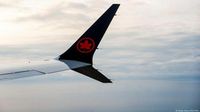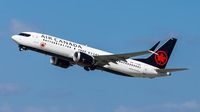In a dramatic turn of events that left hundreds of thousands of travelers stranded across North America and beyond, Air Canada’s flight attendants ended their first strike in four decades with a tentative agreement on August 19, 2025. The walkout, involving more than 10,000 members of the Canadian Union of Public Employees (CUPE), brought the country’s busiest airline to a near standstill for three days and triggered a cascade of economic and reputational consequences for the national carrier.
The dispute, which had simmered for eight months, centered on two core demands: higher pay and compensation for unpaid ground duties—tasks like boarding and deplaning that, according to CUPE, amounted to roughly 35 hours of unpaid work per attendant each month. The union’s persistence, including its refusal to comply with a Canada Industrial Relations Board (CIRB) back-to-work order, underscored the growing assertiveness of labor unions in a tight labor market, as reported by The Globe and Mail and La Nacion.
Travelers felt the impact almost immediately. From the moment CUPE members walked off the job just after midnight on August 16, Air Canada and its low-cost subsidiary, Air Canada Rouge, were forced to ground approximately 700 flights daily. By August 18, the number of canceled flights had reached 240, with more than 500,000 passengers affected overall, according to La Nacion. The chaos rippled as far as Costa Rica, where direct routes from Toronto and Montreal to San José and Liberia were repeatedly canceled. Local tourism operators in Guanacaste reported a sharp drop in hotel bookings, and Costa Rican aviation authorities advised travelers to avoid airports without confirmed flight information.
The economic fallout was immediate and severe. Air Canada estimated daily financial losses of $60 million, prompting the airline to suspend its third-quarter and full-year 2025 profit forecasts. Shares of the company dropped nearly 3% during the strike, as reported by AINVEST. The airline began a phased wind-down of operations as early as August 13, after CUPE issued a 72-hour strike notice and Air Canada responded with a lockout notice to ensure an orderly shutdown.
Canadian Prime Minister Mark Carney did not hide his frustration over the impasse. After eight months of negotiations failed to yield a breakthrough, Carney lamented the disruption to “hundreds of thousands of Canadians and visitors.” On August 19, he expressed hope that the tentative agreement would “ensure flight attendants are compensated fairly at all times, while ending disruption for hundreds of thousands of Canadian families, workers, and visitors to Canada.”
Air Canada’s leadership, meanwhile, defended its approach. CEO Michael Rousseau described the company’s offer as a 38% total compensation increase over four years, which he claimed would make Air Canada’s flight attendants the best-compensated in Canada. “At this point in time, the union’s proposals are much higher than the 40%. And so we need to find a path to bridge that gap,” Rousseau told The Globe and Mail, expressing amazement at CUPE’s defiance of the CIRB’s order. He also emphasized the need for flight attendants to return to work to resume operations and reassured stakeholders that his leadership team was equipped to navigate the dispute and its aftermath.
The government’s role became pivotal as the strike wore on. On August 17, Jobs Minister Patty Hajdu invoked Section 107 of the Canada Labour Code, ordering binding arbitration—a move CUPE called “blatantly unconstitutional.” The union’s defiance led to a further halt in Air Canada’s recovery efforts, with flights remaining suspended through August 18. However, renewed negotiations on the night of August 18, mediated by William Kaplan, finally produced a breakthrough. The tentative agreement, announced early August 19, included pay increases and at least 60 minutes of ground pay per flight—key issues for the union. The deal also aims to boost average salaries for senior attendants to around CAD 87,000 by 2027, pending member approval.
Air Canada quickly confirmed the mediated agreement and announced a phased resumption of flights, beginning the evening of August 19. CEO Rousseau cautioned that “full restoration may take a week or more, so we ask for patience from our customers.” The airline, which operates about 700 flights daily, prioritized major hubs such as Vancouver, Toronto, and Montreal to stabilize its network while managing the logistical challenge of repositioning aircraft and crews, according to AINVEST.
For travelers, the resolution brought relief but not immediate normalcy. Air Canada offered free changes or refunds, with many transactions handled automatically via its app or website. Costa Rican authorities reminded passengers of international rules that may entitle them to compensation for delays exceeding three hours, and experts advised checking travel insurance policies for coverage of additional costs like hotels or alternative bookings. Still, the frustration lingered for many, especially those caught in the peak summer travel season.
Behind the scenes, the strike exposed deeper structural challenges for Air Canada and the broader airline industry. The tentative agreement’s inclusion of ground pay aligns with recent industry trends at U.S. carriers like Delta and American Airlines. Yet, the expanded benefits and pay increases are expected to pressure the airline’s already thin profit margins, especially amid rising fuel costs and inflationary pressures. As AINVEST noted, the strike’s resolution through government-mandated arbitration sets a precedent for future labor negotiations and highlights the political risks airlines face when labor disputes escalate.
For investors, the post-strike period represents a critical inflection point. Air Canada’s suspension of financial guidance for the rest of 2025 reflects ongoing uncertainty, while its phased operational resumption and customer-focused recovery strategies will be closely watched. The airline’s ability to balance short-term fixes with long-term reforms—such as investing in crew scheduling software and reimagining labor relations—will determine its competitiveness in a volatile market. As AINVEST observed, “the airline’s ability to navigate this inflection point will hinge on its adaptability—both in managing immediate disruptions and in reimagining its labor and customer strategies.”
Meanwhile, Jobs Minister Hajdu announced a probe into allegations of unpaid work in the airline sector, expected to conclude within six to eight weeks. The outcome could have far-reaching implications not just for Air Canada and its employees, but for labor practices across the Canadian aviation industry.
As flights gradually return and travelers adjust their plans, the story of Air Canada’s strike serves as a vivid reminder of the delicate balance between labor rights, corporate strategy, and the needs of a global traveling public. The coming weeks will reveal whether the tentative peace can hold—and whether Canada’s flagship airline can truly restore trust and stability in the wake of unprecedented disruption.






